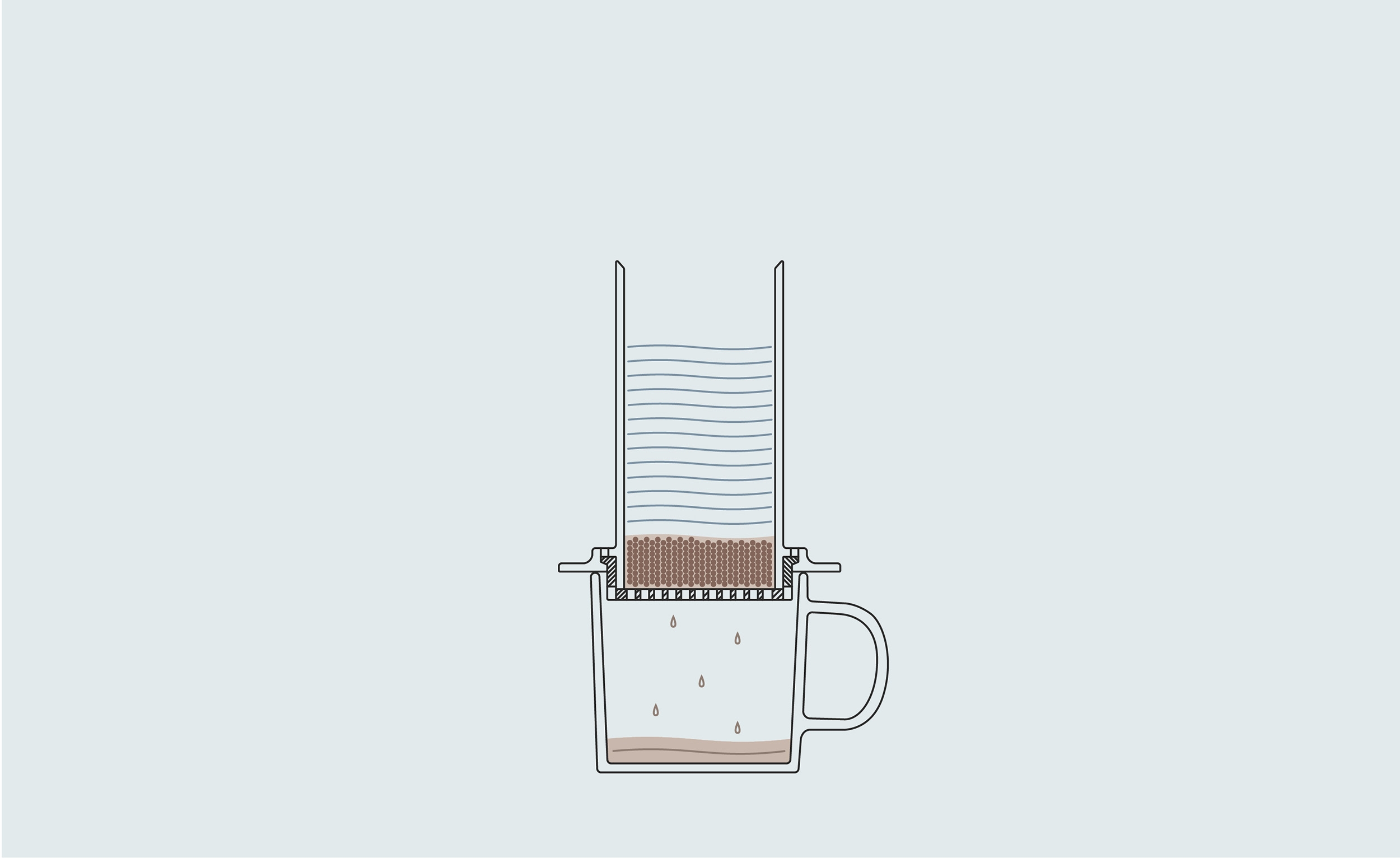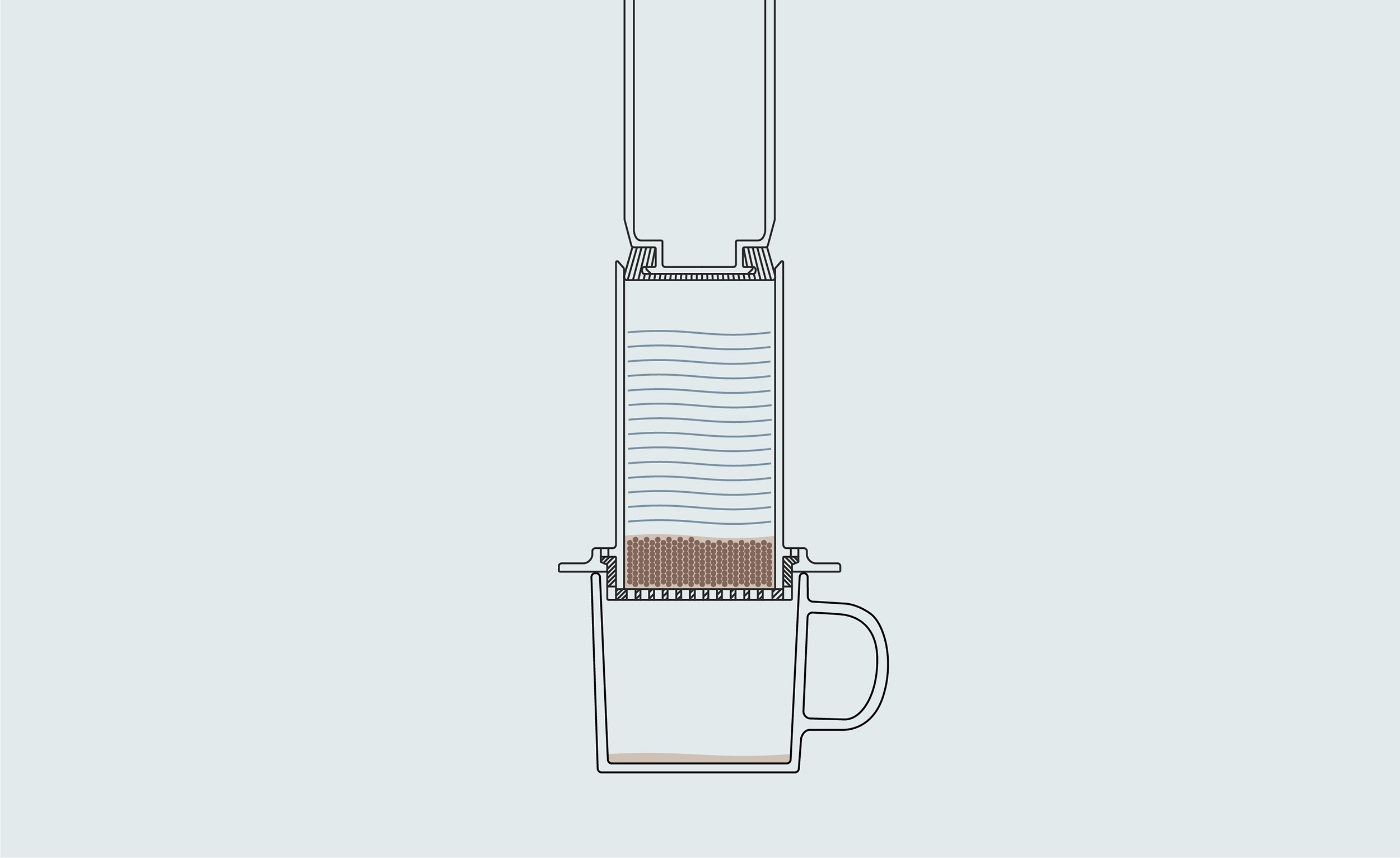There is much debate surrounding the inverted versus upright approach to AeroPress brewing. This diagram illustrates how inserting the plunger helps prevent the liquid from escaping from the upright device:
 This AeroPress is in the upright position, without the plunger inserted. With this AeroPress configuration, brewed coffee will slowly percolate through the filter and into the cup. The flow rate is generally far slower than in a conical pour-over device; for a standard dose, the brew will drip through at a rate of approximately 30 mL/minute.
This AeroPress is in the upright position, without the plunger inserted. With this AeroPress configuration, brewed coffee will slowly percolate through the filter and into the cup. The flow rate is generally far slower than in a conical pour-over device; for a standard dose, the brew will drip through at a rate of approximately 30 mL/minute.
 To gain more control over the amount of liquid retained in the slurry, some baristas insert the plunger into the top of the AeroPress while the coffee steeps.
To gain more control over the amount of liquid retained in the slurry, some baristas insert the plunger into the top of the AeroPress while the coffee steeps.
At the start of the brewing process, when water is poured into the AeroPress, a little bit of brewed coffee will drip through the filter. Once the plunger is inserted at the top of the brewer, a slight vacuum is created. It allows you to continue steeping your coffee without permitting liquid to percolate through the coffee bed and escape into the cup. One advantage of this approach is that a compact bed of coffee grinds will form on the top of the filter paper. Just as with a pour-over, this compact bed of grinds can add an additional level of filtration, resulting in brews with a silkier mouthfeel. Whilst we have found this practice does seem to change the sensory quality of brews slightly, it does not appear to appreciably alter the turbidity of a brew as Nasko Panov explains in this recent BH white paper on AeroPress Turbidity.
Nasko used a UV spectrophotometer to measure the turbidity of a range of approaches to AeroPress brewing. The UV spectrophotometer shines a beam of a specific wavelength of UV light through the coffee, and measures the amount that is absorbed by undissolved solids in the coffee. In a separate experiment, Panov showed that the amount of UV light absorbed correlates directly with the turbidity.